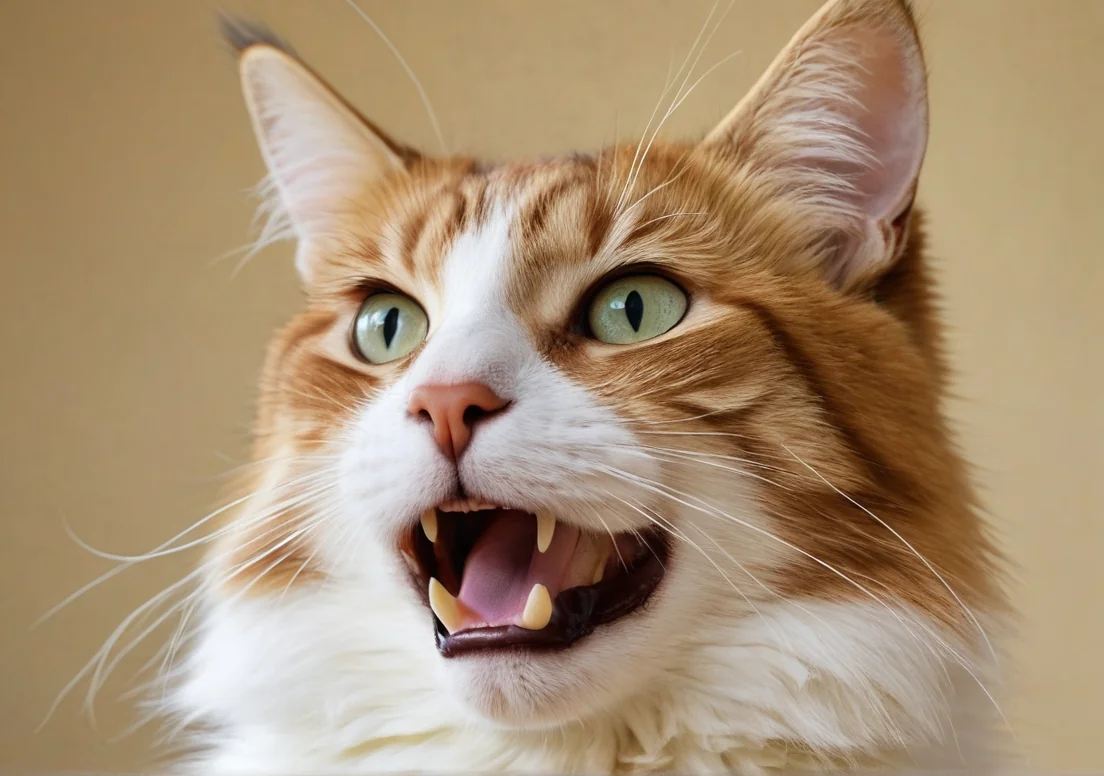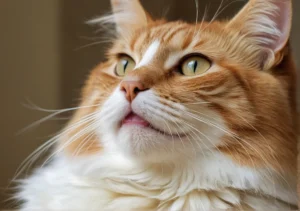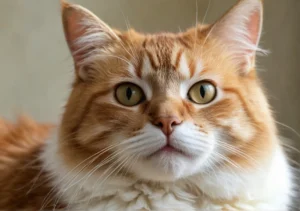Cats are known for their quirky behaviors, and one that often intrigues pet owners is when their feline’s jaw drops. This unusual action can leave many wondering what’s going on in that clever little head.
Cats drop their jaws primarily when they are startled, confused, or experiencing intense curiosity. This involuntary reaction can signal surprise, excitement, or even a moment of sensory overload. Yet, there’s much more to this fascinating behavior than just a simple explanation, and the nuances behind it are sure to pique your interest.

What causes cats to drop their jaw?
Cats can unexpectedly drop their jaws for several reasons, often tied to their instinctual behaviors or responses to their surroundings. A common trigger is sudden stimuli, such as loud noises or unexpected movements. In these moments, dropping the jaw may signify shock or intrigue. It’s their way of processing the new information quickly.
Interestingly, while we might think this behavior is purely instinctual, it can also reflect curiosity. Have you ever noticed your cat’s jaw dropping when they’re watching a bug scurry across the floor? That’s them locked in concentration, processing what they’ve seen or heard.
Additionally, jaw dropping can result from excitement—maybe when they spot their favorite toy or become engaged in play. Cats are observant, and this jaw drop can be a way of expressing their interest and eagerness.
Is jaw dropping a sign of distress?
Jaw dropping isn’t always a happy occurrence; it can sometimes indicate anxiety or discomfort. If your cat drops their jaw and appears tense or their body language changes—like pinned ears or a twitching tail—it may be a sign of distress. This could happen in scenarios such as visiting the vet, encountering another pet, or being in an unfamiliar environment.
Here are a few signs that jaw dropping may be linked to distress in your cat:
- Body posture: Is your cat crouching or hiding?
- Vocalizations: Are they meowing or growling more than usual?
- Pacing: Is your cat moving restlessly?
- Hiding: Do they seek out small, enclosed spaces?
- Grooming: Are they over-grooming or showing signs of excessive grooming behavior?
If you notice these signs alongside a jaw drop, it’s worth paying attention. Making changes to your cat’s environment or routine may help reduce their stress levels. In some cases, it may be beneficial to consult with a vet or a pet behaviorist for further insights. Addressing anxiety early can lead to a happier, healthier feline companion.
Do all cats experience jaw dropping?
Not all cats exhibit the behavior of jaw dropping, but it’s relatively common among certain breeds. Many feline companions, especially Siamese and Bengals, are known for being more expressive and may show this quirk more frequently. This jaw dropping can sometimes happen when cats are feeling relaxed or curiously investigating something intriguing, such as a new scent or visual stimulus.
Interestingly, this behavior isn’t limited to just a few breeds. Even domestic cats can occasionally show jaw dropping as a part of their playful personality or while they’re in the midst of a dream. While most cats might drop their jaw at some point, it’s far more about individual temperament and environment than a breed-specific trait.
Keep an eye on your cat’s behavior and surroundings. Understanding when and why your cat drops its jaw can help in spotting if it’s just a quirk or a sign of something more serious, like dental issues.
How does feline anatomy contribute to jaw dropping?
Feline anatomy plays a significant role in jaw dropping behaviors, largely due to the unique structure of a cat’s jaw. Cats possess a flexible jaw that allows for a wider range of motion than many other animals. This flexibility is ideal for their natural hunting instincts, letting them catch and manipulate prey effectively.
However, this same flexibility can lead to instances where cats may inadvertently let their jaw hang when they’re relaxed or distracted. The muscles controlling the jaw can become temporarily disengaged, particularly when a cat is in a sleepy state or focused on something captivating in their environment.
A couple of anatomical factors include:
- Reduced range of motion: Unlike dogs, cats’ jaw movements are less rigid, allowing for a softer, more relaxed stance that can result in a dropped jaw.
- Unique dental structure: Cats have fewer teeth than dogs and a set of sharp, pointed teeth designed for tearing rather than grinding, contributing to the jaw’s appearance when relaxed.
Tip : If you notice your cat dropping its jaw frequently while seeming lethargic, consider a vet checkup to rule out any underlying issues. It’s always good to stay on top of their health!
What is the connection between hunting and jaw dropping?
Cats are natural hunters , and their behavior is often a reflection of their instinctual drives. A dropped jaw can occur when a cat experiences a surprising scent, sight, or sound while hunting—especially relating to prey. This reaction is sometimes referred to as the “flehmen response.” When a cat encounters intriguing scents, they may drop their jaw slightly to better detect and analyze the odor. It’s a way for them to gauge their environment and assess whether what they sense is a viable prey.
Moreover, during the excitement of stalking or preparing to pounce, a cat may exhibit this jaw-dropping behavior as it anticipates the hunt. It’s all part of their finely-tuned sensory system in action—every little detail counts in the wild.
Can dental issues cause jaw dropping?
While jaw dropping can often relate to hunting instincts, dental problems shouldn’t be ruled out as a potential cause. If your cat’s jaw drops frequently or appears misaligned, it could signal underlying dental issues. Pay attention to these signs that might indicate your feline friend is in discomfort:
- Bad breath: Foul odor can point to tooth decay or gum disease.
- Difficulty eating: If they’re struggling to chew or avoiding food, it could mean oral pain.
- Pawing at the mouth: Cats often signal discomfort by trying to alleviate it themselves.
- Swollen gums: Look for inflammation or redness, indicating possible infection.
- Weight loss: Inconsistent eating habits due to oral pain may lead to significant weight changes.
It’s essential for early intervention—dental issues can escalate quickly and lead to more severe health problems. A vet check-up can help nip issues in the bud and keep your cat happy and healthy. Regular dental care, including cleanings or chews designed for dental health, can also support their overall well-being.
How do stress and play impact this behavior?
Cats can be quite expressive, and their body language tells us a lot about how they’re feeling. Stress and play are critical aspects of a cat’s environment that can significantly influence jaw dropping behavior.
In a stressful situation, a cat might drop its jaw as a response to anxiety or discomfort. This behavior can indicate that the cat is overwhelmed or trying to process an intense stimulus. For instance, if your kitty is in a chaotic environment—maybe there are loud noises, unfamiliar visitors, or even a new pet—this can trigger a jaw drop. It’s their way of coping or expressing uncertainty.
On the flip side, during play, jaw dropping can signal excitement. When cats are engaged in play, particularly with toys that mimic prey, their jaws might drop as they pounce, chase, or stalk. This isn’t just about the action; it can also be part of the ‘flehmen response’, where cats curl back their lips, and their jaw may drop momentarily while they investigate scents that entice them.
To summarize, consider the following:
- Stressful environments can lead to jaw dropping as a sign of anxiety.
- Engaging in playful activities can result in jaw dropping due to exhilaration and instinctual behaviors.
The cat’s immediate surroundings greatly influence whether a jaw drop means they’re on edge or simply enjoying their feline instincts.
Are there specific triggers for jaw dropping?
Certain situations can almost guarantee you’ll see a cat’s jaw drop. When you know these common triggers, you can better understand your furry friend.
Flehmen Response : When cats catch a whiff of something intriguing, like pheromones or other scents, they may open their mouths slightly as they inhale deeply.
Surprising Sounds : An unexpected noise, like a doorbell or a loud crash, can cause a startled jaw drop as they react to the source of their surprise.
Exciting Visuals : Seeing a bird outside the window or a flash of movement can trigger an immediate response; their jaw might drop as they get ready to pounce.
Playful Attacks : During a spirited chase with a toy or even with another cat, a jaw drop can occur during leaps and bounds.
Curiosity Overload : New objects or environment changes can lead cats to momentarily drop their jaws as they process the novelty.
It’s helpful to recognize these triggers, as they reveal how your cat interacts with their environment. Make sure to provide a balanced atmosphere with opportunities for play while minimizing stressors. Keeping their environment as calm and stimulating as possible can lead to a happier, more vocal feline friend.
Fun facts about cat behavior
Cats are full of surprises, and one of their quirkiest behaviors is jaw dropping. This fascinating act isn’t just for show; it often ties into their unique ways of sensing the world. When cats open their mouths wide, it’s usually a sign of them employing a behavior called the Flehmen response. This helps them investigate scents more closely. By curling back their lips and exposing their teeth, they’re allowing air and scent to enter the vomeronasal organ, which helps them identify pheromones and other smells.
Additionally, jaw dropping can occur when a cat is feeling particularly curious or even startled. If a cat spots something intriguing, you might see that jaw open wide as they process the new stimulus. Sometimes it’s just them expressing surprise or excitement—a brief moment where they’re too taken aback to react!
Here’s a quick list of related cat behaviors worth noting:
- Purring: Often a sign of contentment, but can also indicate discomfort.
- Kneading: A throwback to kittenhood; it’s a way to feel secure.
- Tail Position: A raised tail usually means a happy kitty, while a tucked tail indicates fear or submission.
- Slow Blinking: A cat may give you slow blinks to show they’re comfortable and trust you.
Understanding these behaviors can deepen your connection with your feline friend. Keep an eye out for their little quirks, and you’ll surely gain a newfound appreciation for their charming, often mysterious, mannerisms.
Alex, a passionate animal lover, has experience in training and understanding animal behavior. As a proud pet parent to two dogs and three cats, he founded AnimalReport.net to share insights from animal experts and expand his knowledge of the animal kingdom.




